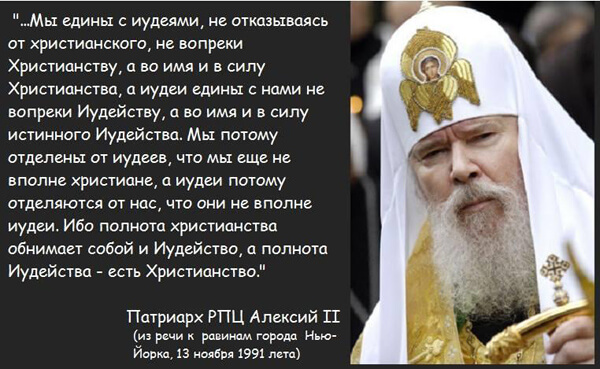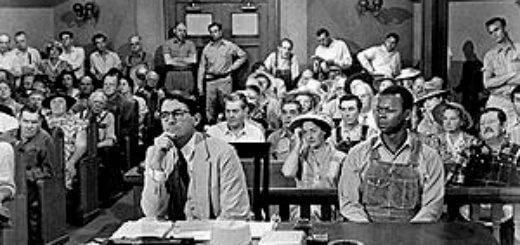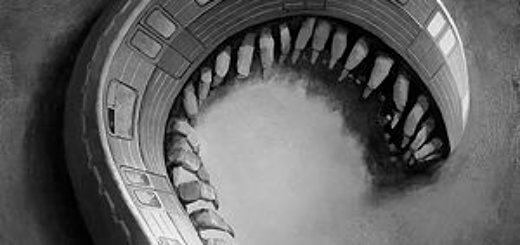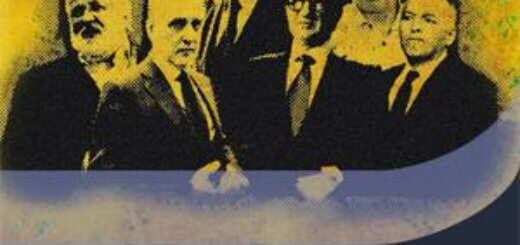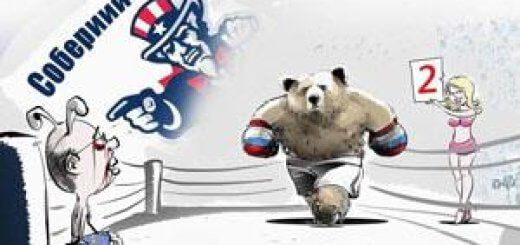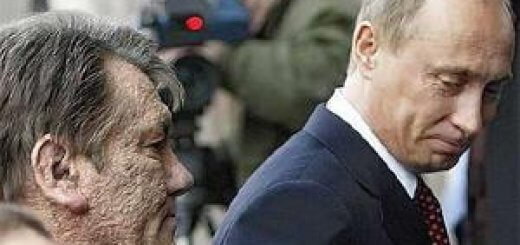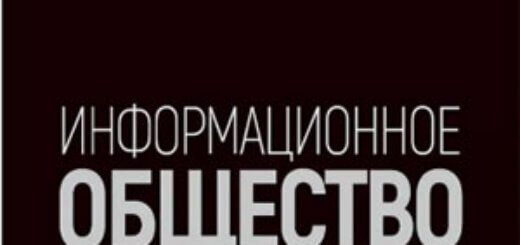
The international policy of the second half of XVI and the first half of XVII centuries was determined by the division of European States into two religious camps. Of them greater cohesion and a more aggressive character differed the Catholic camp, at the head of which stood the Habsburgs, first the Spanish (during the time of Philip II), then Austria (during the thirty years war). Protestantism had defenders in the face of such rulers and politicians as Elizabeth of England, William of orange, Henry IV of France, Gustav Adolf of Sweden, and in the face of entire Nations whose national independence was threatened by a Catholic reaction.
Catholicism sought in international politics to suppress national independence; Protestantism, on the contrary, linked its cause with the cause of national independence. Therefore, in General, the international struggle between Catholicism and Protestantism was a struggle between cultural reaction, absolutism and enslavement of nationalities, on the one hand, and cultural development, political freedom and national independence, on the other.
Recall that before the XI century there was a single universal Christian Church. The first political prerequisite for the split was the division of the Roman Empire into Eastern and Western in 395. This circumstance predetermined the claims of each of the parties to the sole leadership of the Church.
In the Eastern Roman Empire (later called Byzantium) for a long time remained strong Imperial power. The development of the Eastern and Western regions of the once unified state went in different ways. The Western Church accordingly amended its doctrine and rites, the interpretation of the decrees of the Ecumenical councils and Christian dogmas. The Eastern Church differed conservatism of Church life of the Orthodox tendency to tradition, to custom, covered and sanctified by antiquity.
The Western Christian Church fought for the primacy of the power of the Church over the secular power with a single center in Rome. The weakness of the Eastern Church was its fragmentation into two and then into five centers headed by patriarchs. By the way, the Russian Orthodox Church in this Church hierarchy takes the 5th place after Constantinople. With strong Imperial power in Byzantium, the Eastern patriarchs often quarreled among themselves, fought for supremacy, each sought to consolidate their influence.
Emperor Constantine and his successors, strengthening their Empire, turned the Christian Church into a state institution. The Patriarch of Constantinople was essentially a Minister for religious Affairs. Since the middle of the IX century there was a persistent struggle between the papacy and the Patriarchate for domination in the Christian world. The main reason for the split was the desire for power of the Patriarch of Constantinople Photios and the Pope Nicholas I.
The main dogmatic difference between the Western and Eastern churches was the question of the origin of the Holy spirit: the Eastern Church recognized the origin of the Holy spirit only from God the father, and the Western-from God the father and God the son.
Ritual differences came down to the fact that the Eastern Church denied the necessity of the post on Saturday, because it took place in the Western Church, celibacy of the Western clergy, the erection of the deacons directly to the bishops and others of the Canonical differences were reflected in the fact that the Pope arrogated to themselves the right to be the head and judge of all Christian churches.
In 1054 the two churches have betrayed each other anathema. The split finally took shape. Over time, the Western Church received the name of the Catholic (universal) Church, and the Eastern Christian Church was given the name of the Orthodox Church (that is, correctly praising God).
Through the years the 911 in 1965 Pope Paul VI and Patriarch Athenagoras I lifted the mutual anathemas on both churches, but the reunification has not occurred. There’s too much resentment.
The Catholic Church is strictly centralized, has a single center, a single head, the Pope, who, according to Catholics, is the vicar of Christ on earth, endowed with infallibility in matters of faith and morality. The center of Catholicism and the residence of the Pope-the Vatican, a tiny state in the center of Rome. The Vatican state was established in 1929, the Total number of the clergy up to 0.5 million out Of 1200 million Christians, Catholics account for 650 million.
The doctrine of the Western Fathers about the purifying fire after death formed the basis of the Catholic dogma of purgatory — an intermediate state between hell and Paradise, where a person is in pain, but temporary, not eternal. Eastern tradition rejects the doctrine of purgatory.
The Orthodox Christian does not despair at the thought of the afterlife retribution, for he has hope that salvation will be possible not only for the righteous, but also for those sinners who have not been awarded the Kingdom of Heaven by death.
The sacrament of baptism in Catholicism is performed by pouring water or immersion in water; whereas in Orthodoxy – only by immersion in water. The sacrament of anointing in Catholicism is performed when a child is seven or eight years old, the so-called confirmation. Have Orthodox-soon after birth. The sacrament of the Eucharist (communion) is performed at Catholics on fresh bread, at Orthodox – on kvass. Only the clergy of the Catholics could take communion with bread and wine, the laity – only with bread.
Orthodoxy does not have a single control center, like the Vatican
If the Patriarch of Constantinople is considered universal, it means that he is “the first among equals”.
15 independent Orthodox churches with a total number of 150 million believers belong to Orthodoxy. The largest and most influential of them is the Russian Orthodox Church. Each Orthodox Church is headed by a Patriarch. He is elected by the local Council, which holds the highest authority in all matters of faith, Church administration, and Church court.
The basis of the Orthodox faith of the creed, as adopted at the first two Ecumenical councils 325 and 381, the 12 members (paragraphs) of the article of faith formulated ideas about God, his relationship to the world and man. These include the concepts of the Trinity of God, the incarnation of God, redemption, resurrection from the dead, baptism, the afterlife, etc.
All the basic tenets of the Orthodox Church are declared true, eternal, communicated to man by God himself. They are declared incomprehensible by reason. The basis of knowledge of the symbol of faith is faith. The creed needs to be known by heart.
The Catholic Church not only announced its claims to full power in society, but also tried to realize them, using its political influence, military and financial power, as well as the weakness of the Central government. The papal ambassadors, collector of Church taxes and the sellers of indulgences had spread through all countries of Europe. (The papal Church traded indulgences-letters of absolution both past and future sins, which were issued on behalf of the Pope for money or any services to the Church).
One of the first to oppose the abuse of the Roman Church was the Professor of theology at the University of Prague, Jan Gus. He wrote an essay” on the Church”, in which he proved that the true Church is not only a set of clergy, but also all believers. Isolation and privileged position of the clergy he considered inconsistent with Christian doctrine and required the equations of all Christians before God.
In the cult it was expressed in the communion of the laity in the same way as the clergy (the body and blood of Christ). And here is the material side of things. Jan Gus advocated secularization (seizure) of Church lands. The Pope in 1413 excommunicated Jan HUS from the Church. Then at the Ecumenical Council of Jan HUS was accused of heresy, in 1415 he was contrary to the guarantees of security issued to him burned at the stake. This was followed by the Hussite wars-military operations involving the followers of Jan HUS, as well as between them, in Bohemia (present-day Czech Republic), which took place in the period from 1419 to 1434.
On the crowded Parliament in September 1415 in Prague was made a protest against the burning of HUS (known as the protestatio Bohemorum), signed 452-name nobles, barons and gentlemen of Bohemia and Moravia and directed the Council of Constance, the Cathedral, the protest was declared a readiness to “defend to the last drop of blood law of Christ and the humble preachers.”
The Council declared heresy in Bohemia the unauthorized practice of priests who sympathized with Jan HUS, after communion to allow the laity to the Cup with the blood of Christ — while drinking from the Cup-according to custom allowed only priests. The “bowl” became a universal demand of supporters of urgent reforms in the Bohemian Church, and later — a symbol of the entire Hussite movement. Fifteen years of war thoroughly devastated Central Europe.
Protestantism emerged in Europe in the 1st half of the 16th century as a denial and opposition to the medieval institutions of the Roman Catholic Church during the reformation, the ideal of which was a return to Apostolic Christianity. The leader of the religious revolution was Martin Luther. The first open speech of Luther against Church policy took place in 1517 — he publicly and fiercely condemned the trade in indulgences, then nailed to the Church door 95 theses outlining his position.
Six princes and fourteen free cities of the Holy Roman Empire at the Reichstag in Germany in 1529 filed the so-called “Speyer protest.” According to the title of this document, the supporters of the reformation were later called Protestants, and the totality of the non — Catholic denominations that arose as a result of the reformation – “Protestantism”.
The original forms of Protestantism Lutheranism was, zwinglianism, Calvinism, Anabaptism, Mennonite, Anglicanism
The main points of classical Protestant theology:
1. The Bible is the only God-inspired and authentic word of the Lord, the only source of Christian doctrines, clear and self-interpreted.
2. Forgiveness can be obtained only by faith, regardless of good deeds and deeds.
3. Salvation comes only as God’s grace, as undeserved mercy and undeserved gift from God for Jesus ‘ sake, but not as something deserved by a sinner.
4. Jesus is the only mediator between God and man, salvation is possible only through faith in him.
5. Man should only honor God and worship him alone, for salvation is granted only through his will and actions — not only the gift of the Atonement of Jesus on the cross, but also the gift of faith in this Atonement created in the hearts of believers by the Holy Spirit.
6. Every believer has the right to interpret and Express the Word of God.
The founders of Protestant theology were: Martin Luther, J. Calvin, W. Zwingli, and F. Melanchton
Modern liberal Protestantism does not demand discipline from its followers in the performance of social and religious rules, which leads to the spread of the so-called “female priesthood”, the blessing of homosexual marriages, etc., resulting in the secularization of the faith itself.
Religious or Huguenot wars-a series of protracted civil wars between Catholics and Protestant Calvinists (Huguenots), which tore France under the last kings of the Valois dynasty, from 1562 to 1598. These wars were characterized by incredible cruelty on both sides of the prisoners, as a rule, did not take, and sometimes cut out entire villages, if their inhabitants adhered to a different religion.
On 24 August 1572, the day of St. Bartholomew, the Catholics massacred the Huguenots who had gathered in Paris for the wedding of Henry, king of Navarre, and Princess Marguerite Valois. More than 9,000 people were killed, including Admiral Coligny and many other Huguenot chiefs. Were ruthlessly killed even women and children, and their bodies dumped in Seine in during several subsequent days in France were killed several tens of thousands of “heretics.”
As for the powers that be, that Mercantile considerations sometimes be higher than religious beliefs. So, in order to be recognized in Paris as the French king, Huguenot Henry IV of Navarre had to change his faith and he is credited with the catch phrase: “Paris is worth a mass!”that means conversion to Catholicism. For that subsequently he and was stabbed to death Huguenot.
Formally, we can assume that the Huguenots won the religious wars, but in fact it was imaginary. The vast majority of the French population remained true to Catholicism. In 1685, king Louis XIV abolished the edict of Nantes of 1598 by Henry of Navarre, who guaranteed freedom of religion and recognized the supremacy of Protestantism in 200 cities. The Huguenots were faced with a choice of either accepting Catholicism or leaving their homeland. Hundreds of thousands of French chose to emigrate: and settled in Germany, Holland, Switzerland, England and overseas colonies, particularly in North America and South Africa.
One day in 1577 in the French city of Toulouse burned 400 “witches”. This event got into the Chronicles only because all 400 unfortunate women were burned in one big fire. The chronicler thought it was worth mentioning. The number of executed “witches” seemed quite ordinary.
Juan Llorente in the Critical history of the Spanish Inquisition writes: “without the existence of this (Inquisition) Tribunal And the influence of its principles in Spain, there would be twelve million more people against the present population, which is estimated at eleven million»
A great number of victims of the thirty years religious war between the Catholic and Protestant League. If the population of Germany in 1618 was about 16 million people, by 1648 it had decreased fourfold – to 4 million.
In 1631, the Catholic army captured the city of Magdeburg, which was subjected to unprecedented defeat. In the hands of mercenaries killed more than 20 thousand people. The massacre in Magdeburg shocked the whole of Europe, but it was not an isolated case. Mercenary armies have become a real disaster for Germany. The peace of Westphalia of 1648, which ended the Thirty years ‘ war, confirmed the equality of Catholic and Lutheran religions throughout Germany.

